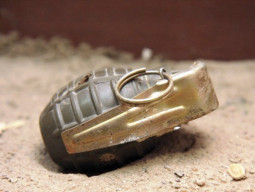
One person is burnt every five minutes in Pakistan, according to unofficial figures. Moreover, most of these injuries take place at home, especially the kitchen and some simple first aid can go a long way.
Doctors want people to know more about these basic tips which is why Essa Laboratory held on Thursday a seminar by Dr Ehmer, who is an associate professor at Dow University of Health Sciences (DUHS) and heads the Burns Centre at Civil Hospital, Karachi.
Sixty per cent of burns in Pakistan are from fires, most of which take place at home. “There is a common misconception that water should not be used on people with fire burns,” said Dr Ehmer. “This is not true. In the event of a fire burn, a large quantity of water must be splashed on the person and they should be immediately covered with a blanket.” By covering the person with a blanket you cut off the fire’s oxygen supply. In no scenario should they be allowed to run around as the fire would intensify with oxygen.
After the fire is doused, the next concern should be to lessen the pain. The burnt area should be cooled immediately and all burnt clothing removed. The patient should be taken to a hospital where they would be hooked up to a drip and given a shot to prevent tetanus. After that, they will be referred to a specialised centre.
After the patient reaches the centre, doctors make a thorough and detailed assessment of the burns. Any “associated injuries” need to be kept in mind at this stage. A common mistake made by medical practitioners is to release people with electrical burns too early as they may not exhibit significant signs of damage. Such patients should be kept under observation for at least 24 hours, according to Dr Ehmer. Most electrical burn victims are those who are trying to fit a kunda.
The proper management of burn victims is also critical in the multi-pronged process of recovery. If there have been severe burn injuries, where the death or physical disability of the person is imminent, Dr Ehmer pointed to a closer analysis of the ‘depth of the burn’ as critical to providing relief.
When doctors determine the extent of the damage, they factor in how long the person was burning and how intense the heat was. If over 15 per cent of the body is burnt, then the damage is considered to be severe. The palm of your hand is measured as one per cent.
People make the common mistake of treating blisters as a symptom of a severe injury. “Blisters are a blessing,” explained Dr Ehmer. They are usually signs of a superficial injury with no deep damage. However, they take up to 20 days to heal but under no circumstances should people try to burst them.
It is also necessary for a doctor to take into account the patient’s medical history, age, and other relevant medical factors, in order to come up with a proper way to treat them.
The mortality rate for burn victims is around 50 per cent in Pakistan, but it can be reduced if doctors avoid mistakes. The problem is that many myths and misconceptions surround burn victims. When people apply this knowledge, the patient ultimately suffers as, in many cases, the doctors are forced to amputate limbs and, in some cases, fail to save the victim’s life.
The first step in the recovery process, which was described as “extremely important”, is first aid. This must be provided within 24 hours of the burn.
Common mishaps leading to burns
People keep generators on while refilling diesel or petrol
Attempting to turn on the generator while holding a candle stick
Kitchen fires
Fitting kundas
Fidgeting with electrical appliances
Not using proper gloves while dealing with toxic chemicals
Published in The Express Tribune, April 29th, 2011.





1731842248-0/Untitled-design-(21)1731842248-0-270x192.webp)











COMMENTS (1)
Comments are moderated and generally will be posted if they are on-topic and not abusive.
For more information, please see our Comments FAQ